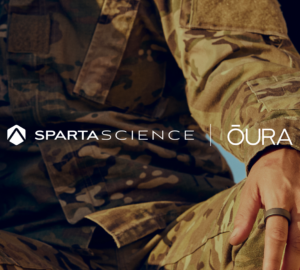Who: Wade S, Marine Corps Veteran, Veteran Advocate, Washington DC
Surprising Oura Insight: When I rest properly, it makes a significant difference on my ability to perform at my best when it matters.
Tell us about your journey. What led you to Oura?
I’m a veteran of the United States Marine Corps. I enlisted in high school in 2001, and while I was in boot camp, the 9-11 terrorist attacks happened. I spent three tours in Iraq, and outside Fallujah in 2004, my Humvee suffered a severe explosion from a large IED (improvised explosive device), leaving me with a serious head wound.
In 2005, I transitioned out of the military. It was harder than I thought it would be, forcing me to work on my mental health and resilience. I pursued education and founded a veterans group at my university. In 2014, I also tried out for the Warrior Games, an annual Department of Defense adaptive-sports competition showcasing wounded service members’ skills, as an outlet for my dedication to fitness and camaraderie with other veterans. I didn’t make the team in 2014, but the experience inspired me to really commit to my physical and mental well-being.
In 2018, I was diagnosed with multiple sclerosis (MS). This served as another turning point, inspiring me to prioritize my health in new ways. I looked for a wearable to help me better understand my sleep, recovery, and readiness, and I discovered Oura, which has been helping me to manage my health.
I tried out for the Warrior Games again in 2023, and this time I made the team. It was not only a physical competition but also a test of my mental and emotional resilience. Oura played a pivotal role in this endeavor, offering insights that helped me manage my energy levels during the demanding competition.
How do you use Oura to monitor your sleep and recovery?
During the games, I had eight sporting events spread across different days. It was quite a challenge because I might have a competition in the morning, and then, the very next day, another event to focus on. I had only 24 hours to pivot from one focus to another.
Managing my rest became crucial. My coaches emphasized the importance of resting as much as possible—no walking around, just getting off my feet and relaxing. Having Oura was a game-changer because it allowed me to check how much I was pushing myself on a particular day. I could assess and make a decision to rest and recover. It was tough because I wanted to be out there cheering for the team, but I had to prioritize my recovery.
It’s amazing to reflect on the days when I could tell I was resting properly. It made a significant difference in my ability to perform at my best when it mattered.
What are your favorite Oura features?
The sleep trends feature is huge for me, especially when I’m traveling. If I have a rough night, it’s like a red flag telling me to plan for some extra rest later. Not getting sleep wears me down more than it used to. Making sure I clock in enough sleep during trips is key.
Training for the Warrior Games, rest wasn’t just important, it was a necessity. “Feet up, eyes closed” was a non-negotiable after doing a lot of standing or walking around during the day.
I spend a lot of time outdoors with my service animal, but I have to watch the clock. Three hours on my feet walking the neighborhoods is great, but I’m no longer skipping on recovery—when I’m training, every hour counts.
So, Oura sleep trends helps me make the right calls about my rest and recovery—whether I’m on the road, catching a flight, or gearing up for the Warrior Games.
What has surprised you about wearing Oura?
Oura is here when I need it, but most of the time, it’s just out of my mind. I was kind of skeptical at first, thinking it might not hold up during my workouts, but it surprised me. It can take a beating and still be alright. My last ring got all beat up, and I loved it for that rugged look.
I don’t expect this new ring to stay shiny for long either, but that’s ok. To me, it’s not about looking new—it’s about getting the job done. I can put it through the wringer—sweat, dirt, muck, you name it—and it holds up. It keeps its charge really well, too. It’s a put-it-on-and-forget-about-it kinda deal for me.
RELATED: How to Train Better Using HRV










